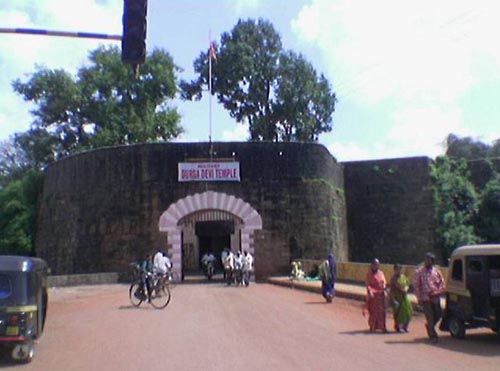Belgaum Fort

Information on Belgaum Fort (Belgaum, Karnataka) - History & Architecture
Belgaum Fort is regarded as one of the oldest monuments of Belgaum of Karnataka. It is a key tourist attraction of Belgaum. It is placed at the slopes of Sahyadris which was traditionally denoted as 'bamboo village'. Sahyadris has a height of 762 meters above sea level and is located at about 100 kilometre distance from Arabian Sea. Develop with large walls and attractive architecture, Belgaum Fort has rich history with various memorials dated to Adil Shahi family.
Belgaum Fort Architecture
Belgaum Fort had battlements which were developed for preventing attacks from invading forces. The fort has oval structure and is bounded by deep and extensive channel exhumed in soft red stone. The exterior of the fort is characterised by comprehensive supports of about 32 feet from the foot of the channel. The interior of the fort has large ground with 1000 yards length and 800 yards breadth. There are two gigantic supports in Belgaum Fort which are fringed by a big gate. This gate was basically regarded as the key entrance of the fort and hence is considered as significant example of Indian architecture. The external side of the entrance is designed with various themes of animals and birds. It is enclosed with huge iron doors and was intended to protect the fort from enemy. There is also a Persian caption at the top of the entrance. Apart from main entrance, there is also a western gate which is shielded by cannons. Inside the fort there are church, mosque and temple which specify Hindi, Islamic and Jain architectural styles.
Belgaum Fort History
Belgaum Fort was established by Jaya Raya (a supporter of Ratta family) in the year 1204. It has experienced various restorations over centuries under diverse successional rulers of the province. Basically, Belgaum Fort belonged to Ratta family and the city surrounding the fort was also served as a capital of Ratta family. After being defeated by Yadava family, they become the controller of Belgaum Fort. In the year 1474, Bahmani Sultanate took over the control of the fort from Yadava family. Subsequently in 1518, Adil Shahi family strengthened Belgaum Fort and added much exciting structures in it. In the year 1686, Mughal king Aurangzeb become the ruler of Belgaum and hence, the regulator of Belgaum Fort. With the variation in circumstances, Belgaum Fort was taken over by Peshwas by the support from British people. However, within various events, the British people took control over Belgaum Fort with the assistance of Kittur Desai in the year 1818, after placing Peshwas. As a consequence, Desai was permitted to rule over Belgaum Fort along with Belgaum city. One notable history related with Belgaum Fort is that Mahatma Gandhi was confined in this place throughout India's fight for independence.
Belgaum Fort Tourism Importance
Belgaum Fort acted as an embankment against the enemy invasion. It played a multitude for various families, i.e. from Rattas to British. Besides, the history of the fort is also related with the freedom fight of India. Furthermore, it can also be stated that Belgaum Fort is an epithet of the inheritance of religious lenience. Nestled within forts are various holy memorials belonging to different regions. These aspects make the fort a worthy place for tourism. The series of rulers along with their constructions provide a permissive view for travellers to observe in Belgaum Fort.
- Bangalore Monuments
- Bagalkot Monuments
- Belgaum Monuments
- Bellary Monuments
- Bidar Monuments
- Bijapur Monuments
- Chitradurga Monuments
- Coorg Monuments
- Dakshina Kannada Monuments
- Gadag Monuments
- Gulbarga Monuments
- Hassan Monuments
- Mysore Monuments
- Raichur Monuments
- Uttara Kannada Monuments
- Yadgir Monuments
- Andaman Nicobar Monuments
- Andhra Pradesh Monuments
- Assam Monuments
- Bihar Monuments
- Chhattisgarh Monuments
- New Delhi Monuments
- Goa Monuments
- Gujarat Monuments
- Haryana Monuments
- Himachal Pradesh Monuments
- Jammu and Kashmir Monuments
- Karnataka Monuments
- Kerala Monuments
- Madhya Pradesh Monuments
- Maharashtra Monuments
- Odisha Monuments
- Punjab Monuments
- Rajasthan Monuments
- Tamil Nadu Monuments
- Telangana Monuments
- Uttar Pradesh Monuments
- West Bengal Monuments